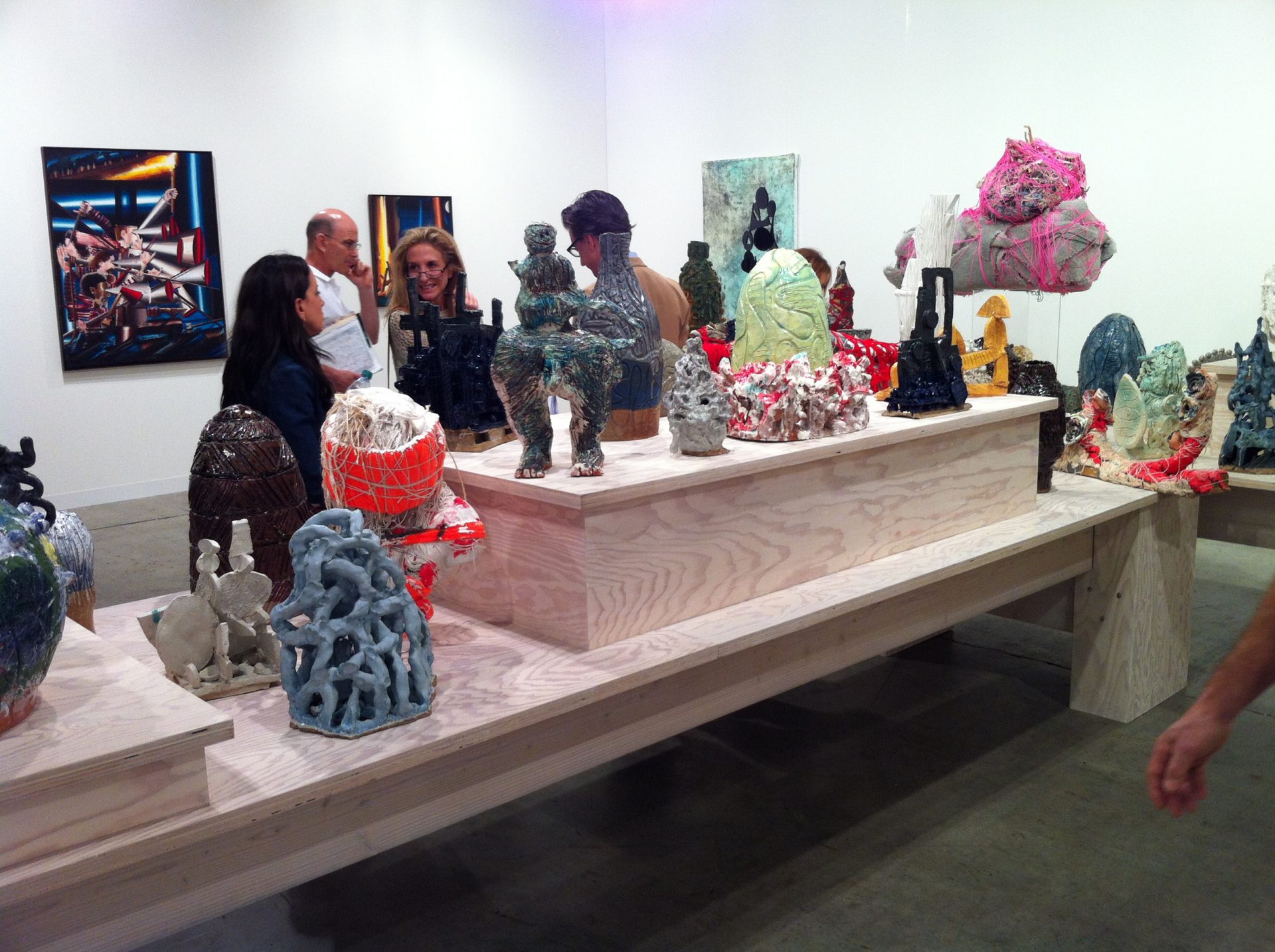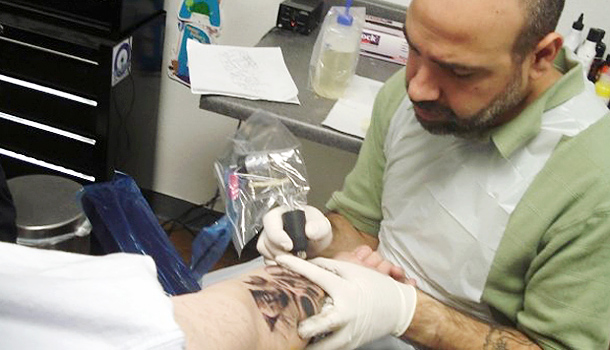Fast Talk: How This Tattoo Artist Became A Tech Entrepreneur:
“Meet Fred Giovannitti, whose ability to tease designs out of people’s brains proves useful in two very different pursuits: tattoo artistry and environmental engineering.
Fred Giovannitti is that rarity: a man who divides his time between two extremely disparate careers. Giovannitti makes his living giving tattoos to discerning customers in Las Vegas, but he also spends a considerable amount of time as the creative director at Vor-Tek Recovery Solutions, a young company with a mission to engineer new ways of cleaning the world’s oceans and waterways. Vor-Tek was a finalist in a recent X Challenge dedicated to faster cleanup of oil spills, partly due to Giovannitti’s innovative designs.
FAST COMPANY: Do you lead a double life?
FRED GIOVANNITTI: I sure do. Half of it is living here in Bend, a small town in Oregon, enjoying time with my children and family while working on projects for Vor-Tek, whose mission is to clean the world’s oceans of oil, plastic, and pollution. Then I fly to Las Vegas for two weeks out of every month for a full schedule of 12-hour days, and I live my life as a well-sought-after tattoo artist in Vegas. The tattoo shop I own is called Tatlantis Allied Arts and Sciences.
What are the ‘allied arts and sciences’?
We do a lot of tinkering over there, building my prototypes, the things I invent. For example, a footswitch is used in tattooing. When you’re tattooing, you have one foot on its heel at a 45-degree angle, and that’s putting a lot of stress on the calf. I needed something a little more flush to the ground. I created this footpad that’s flush to the ground, and all you have to do is apply very slight pressure, and it releases all the tension from the calves.
How did you end up joining forces with Ashley Day, Vor-Tek’s CEO?
It was a typical consultation day in 2007, and Ashley came in. A lot of my clients come in to cover up bad decisions, tattoos they had in the past. He had this strange geometric tribal lizard that was just off the wall of some tattoo shop, on his chest. We covered it up with a large filigreed piece based on a tribute to his wife and two daughters. About the third session, we got into a conversation about goals and aspirations. He started to fill me in on the problem of the world’s gyres, and specifically the Pacific Vortex, which he described as this giant patch of garbage the size of two Texases put together. The next session, I said, ‘You know what we talked about last time? I came up with something.’ I sent him some pictures, and he was pretty excited, seeing as I wasn’t in the industry, I wasn’t an engineer or anything. His exact words were that his best engineers couldn’t come up with that. We started working together to build a prototype of the marine particle skimmer, a device to pick up small particles of plastic. One modification led to another, until we made one focused on oil.
What’s the status of Vor-Tek now?
It’s still a company in its infancy. I’m not getting paid anything; the work I do for that is purely out of the hopes of payment in the future, and if it doesn’t pay, it’s still a good cause. Right now we’re seeking investors, and are using the X Prize to get our foot in the door.
Are you ever surprised to find the trajectory you’re taking?
I was surprised to fall into tattooing to begin with. I was not interested in tattoos in the beginning. I was into graphic design, image mapping, and stuff like that. In 1992, a friend asked me to design him a tattoo. I was shocked; none of my friends were the kinds of guys who’d get a tattoo. I said sure, and designed him something. He came back and showed it to me, and I was outraged at what happened to my artwork. I said that if anyone else ever wanted a tattoo design from me, I’d have to be the one doing it. The whole time I’ve never fit into the industry. I’m not the guy covered in tattoos, listening to death metal.
You do have a few tattoos, though.
I have quite a few, mostly on my legs. When I got started, I didn’t want to tattoo anyone and ruin them for life, so a lot of my first tattoos I did on my legs, places I could reach. I’m completely self-taught.
But how did you manage the transition from tattoo artist to creative director at a tech company? How are the two related?
What tattooing has taught me is the whole concept of producing a creative project by organizing the thoughts and visions of, say, two or more minds–mine and somebody else’s–to where I can pull a design out of their head, by asking the right questions. I help others see on paper what they can just barely see behind their eyelids. That’s my specific talent in this, and that’s turned out to be really helpful in the industry I’m sharing my time with right now.
What is it about your process that lets you pull designs out of people’s heads?
I’m very picky with who I tattoo. Throughout my consultations, I ask the right questions to find out if this is someone I want to hang out with, because I have to spend three hours at a time, two times a month, for months on end. Basically the relationships I put myself in with the client is a co-parent relationship, and the tattoo is our child. If I’m gonna put all my love into it, the co-parent has to be someone I can be in a relationship with.
Can I afford you?
I start people off at $150 an hour, for the first six hours. After that, I bring it down to $100 an hour. I know a lot of artists charge more, but once I get into that relationship with a client, we’re friends, we’re in a relationship together. I would love to not have to charge for this; it almost feels as if I’m doing something wrong, when I’m applying so much love into this piece. Hopefully if Vor-Tek starts to grow out of its infancy and starts to pay off, I can continue tattooing but not charge anymore.
This interview has been condensed and edited. For more from the Fast Talk interview series, click here.
Follow Fast Company on Twitter. Think you’d make a good Fast Talk subject? Mention it to David Zax.”
[Images: Fred Giovannitti]
(Via Fast Company – Design.)


